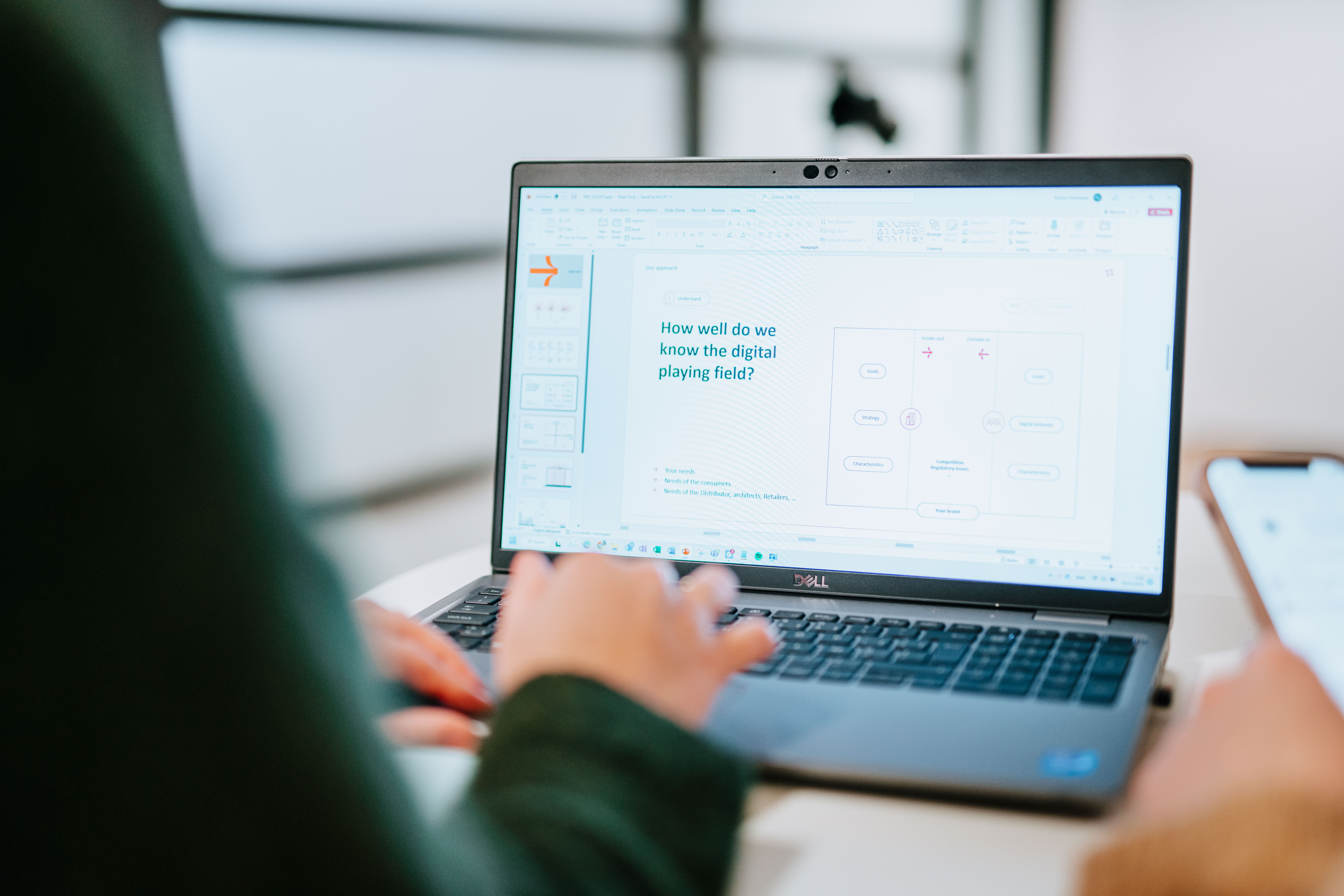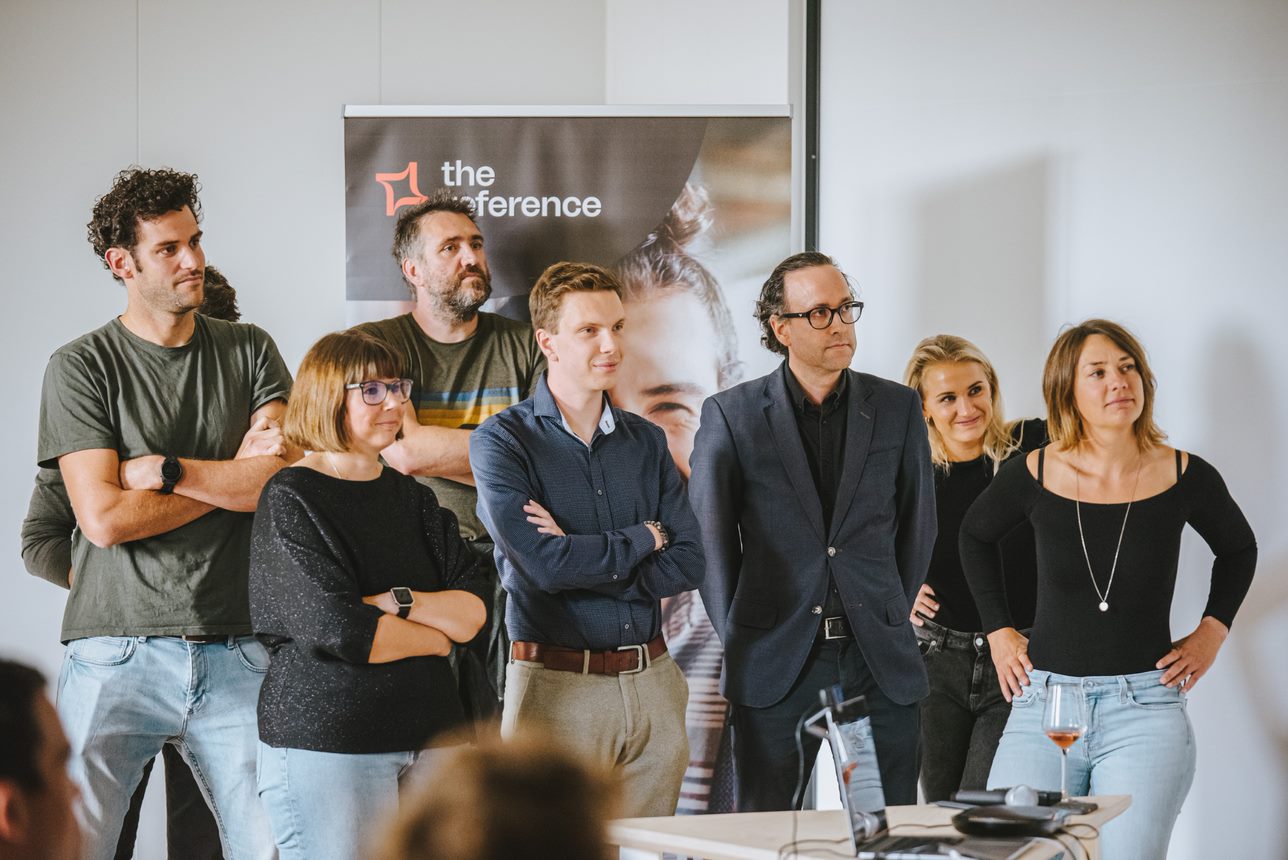As a customer-centric digital agency, we know how powerful a well-executed content migration can be—especially when it goes beyond simply moving content and truly optimizes, aligns, and integrates every asset within the new CMS. While content migration often gets the spotlight, assets are the hidden heroes that are too often overlooked. But here’s the good news: with the right approach, you can turn this often-missed piece into a major opportunity. Let’s explore why this matters so much—and how you can make the most of it.
The Most Underestimated Topic During a Content Migration: Assets
April 12, 2025 | Elke Lenders, Content Strategic Consultant at The Reference

Eyes on the Price
When clients embark on a content migration project, they’re often laser-focused on achieving the big-picture goals:
- migrating to a more secure CMS,
- improving user experience (UX),
- and offering easy access for content editors.
It’s an exciting transformation that promises greater flexibility and scalability. However, in the midst of this strategic shift, one key aspect is often overlooked: assets—images, videos, graphics, and other visual content.

The Overlooked Assets in Content Migration
Think of assets as the “face” of your digital content. They convey your brand’s personality, improve engagement, and create a richer, more immersive user experience. In fact, content with relevant images gets significantly more views than content without images. Similarly, visual content is processed 60,000 times faster than text by the human brain, making it crucial for keeping users engaged.
When migrating to a new CMS, assets—whether they are images, videos, or infographics—are often treated as an afterthought. The primary focus tends to be on text-based content, like blogs, landing pages, and articles, while the visual elements are left behind.
Unfortunately, this oversight can lead to a fragmented experience, with images that don’t fit the new design or don’t perform well on mobile devices. In the worst-case scenario, outdated assets might make your site look unpolished or inconsistent with your brand guidelines.
Why are Assets so Important?
Assets are especially critical since most of first impressions are influenced by design, and poorly optimized or mismatched visual content can result in negative perceptions of your brand. When visual assets are overlooked during migration, it’s not just a missed opportunity—it’s a potential user experience disaster.
The Hidden Costs of Overlooking Assets
Not investing the time and resources into handling your assets properly during migration can also affect your site’s performance and speed. Research shows that over half of mobile site visitors will leave a page that takes longer than three seconds to load. If your assets aren’t optimized for web performance—meaning they are too large, too slow to load, or incompatible with different devices—it can negatively impact your site’s SEO and user engagement.
Here are a few hard-hitting numbers that illustrate the importance of addressing assets during a migration:
- Mobile optimization: A large percentage of mobile searchers are more likely to contact a business if they have a mobile-friendly website. If your assets are not mobile-responsive, you risk frustrating users and losing business.
- SEO and page load time: Image and asset optimization directly affects your site's ranking. A 1-second delay in load time can result in a significant reduction in conversions.
- Bounce rates: Research reveals that a slow-loading page can increase bounce rates by up to 32%, which significantly hurts your chances of engaging users and converting them into customers.
By investing in the optimization and redesign of assets during a migration, you are not just improving the aesthetics but also enhancing user experience, SEO, and ultimately, conversions.

7 tips to Integrate Your Design Team or Allow Time for Asset Upgrades
So, how can you ensure your assets are properly handled during the migration? The answer is simple: either involve your own design team early in the process or allow us the time to upgrade and optimize your assets for you.
If you don’t have the bandwidth to work on assets while migrating content, we can take that load off your hands. We specialize in automating the creation and optimization of high-quality assets with minimal effort. Here’s how we can help:
- Automated Image Resizing: AI tools can resize images automatically to ensure they fit the requirements of your new CMS, whether that means changing their dimensions for various screen sizes or adjusting them for SEO optimization.
- Image Enhancement: We can use AI to enhance old or low-quality visuals, making them sharper, clearer, and better aligned with your updated design system.
- Visual Consistency: We can create new assets that match your brand guidelines, ensuring that your assets are consistent in terms of style, color, and tone across the entire site.
-
AI-Generated Asset Creation: AI can generate new visual content that aligns seamlessly with your brand guidelines and existing assets, such as past photoshoots. This allows us to go beyond simple adaptation and create entirely new visuals tailored to specific audiences and use cases. In e-commerce, we can train image models using the Low-Rank Adaptation (LoRA) approach, feeding the model with diverse product photos taken from multiple angles and settings. This enables the generation of high-quality product shots in a desired style, environment, or theme—effortlessly customized with just a simple prompt.
- AI-Powered Image Modification: AI can modify existing assets in powerful ways. It can transform standard product images, typically displayed on white backgrounds, into immersive, audience-relevant visuals that better reflect real-world applications. Additionally, AI-driven face swaps allow us to seamlessly update employee photos when team members leave the company. We can also adjust visuals to reflect different demographics—such as gender or ethnicity—ensuring inclusivity and adaptability in your brand’s imagery.
- Brand-Consistent Images: By analyzing your existing Digital Asset Management (DAM) system, AI ensures that all newly generated visuals adhere to your brand’s visual identity, maintaining consistency across different touchpoints.
- AI-Generated Pack Shots: Need high-quality product images without the hassle of a photoshoot? AI can generate hyper-realistic pack shots that showcase every angle and detail, perfectly aligned with your brand style and e-commerce requirements.
Simplifying Asset Challenges with Smart, Brand-Aligned Solutions
One of the key benefits of working with a customer-focused agency is having a partner who understands the pressure of getting every detail right—especially when it comes to your digital assets. We know how time-consuming and complex this part of the process can be. That’s why we use AI-powered tools to help deliver high-quality, brand-consistent visuals quickly and efficiently—freeing up your time and resources for what matters most.
It’s not just a time-saver—it’s a creative solution for filling in content gaps without falling back on generic stock photography. Instead, you get visuals that are relevant, engaging, and tailored to your brand. In fact, with the right tools, you can significantly boost the speed and consistency of your content production—without compromising on quality.
By weaving these smart solutions into the migration process, your assets not only come along for the ride—they enhance the experience. The result? A smoother transition, a cohesive brand presence, and a CMS that feels like home from day one.
AI-Generated Images That Reflect Your Brand’s Essence
We get it—AI-generated visuals can raise concerns around authenticity and brand alignment. But here’s the reassuring part: with today’s advanced tools, staying true to your brand has never been easier. If you’re already working with a Digital Asset Management (DAM) system, we can tap into your existing brand guidelines—analyzing everything from color palettes to lighting styles—to ensure every image we generate feels unmistakably “you.”
This means every touchpoint, from homepage banners to social visuals, carries the same consistent style, tone, and impact your audience expects.
Pack Shots—Without the Photoshoot Stress
For e-commerce brands, product imagery is everything. Crisp, detailed pack shots help customers make confident buying decisions—and traditionally, creating them meant organizing full-scale photoshoots, dealing with logistics, and investing in post-production.
AI changes the game. We can now generate hyper-realistic product images—whether it’s white-background pack shots, lifestyle visuals, or customized versions for different audiences—without ever setting foot in a studio. These images are high-resolution, brand-consistent, and ready to use, offering a flexible and cost-effective alternative to traditional photography.
We see, we crave, and we choose—long before logic gets a word in. The visual side of our brain is always calling the shots.
Don’t Let Assets Be the missing Link
When planning a content migration, it’s easy to get caught up in the technical aspects, like CMS selection, content reorganization, and SEO considerations. However, neglecting your assets can undermine the entire migration process. Inconsistent, poorly optimized, or mismatched assets can disrupt the flow of the user experience, hurt your brand’s reputation, and affect SEO performance.
To ensure a successful migration, involve your design team early in the process or allocate time for upgrading your assets. We can help optimize and create high-quality assets with minimal effort, ensuring your site’s performance is top-notch, and your user experience is seamless.
With the right assets in place, your content migration will not only meet your technical goals but will also elevate your brand’s digital presence, driving higher engagement and conversions.
Keep reading with these insights

The evolution of AI: from basic LLMs to orchestrated agents
Artificial intelligence (AI) is revolutionizing our work, interactions with computers, and everyday lives. Among the most impactful advancements are AI agents and multi-agent systems, which redefine efficiency, decision-making and customer engagement.

Is your brand ready for conversational search?
The way people search is changing. AI-powered tools are driving conversational interactions and personalizing results like never before. Our latest whitepaper explores the rise of conversational AI, the role of headless CMS in maintaining agility, and key strategies for optimizing content for AI search engines.

Composable architecture: the key to successful scaling
Want to boost your digital marketing? Discover the power of algorithmic signals. Learn how they can boost your ad performance and conversions. Do not miss out on these valuable insights.


